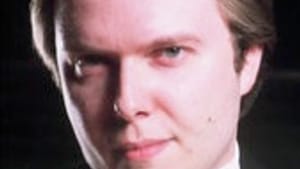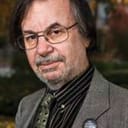Stay in the Loop
BSR publishes on a weekly schedule, with an email newsletter every Wednesday and Thursday morning. There’s no paywall, and subscribing is always free.
Solzhenitsyn in recital

A Solzhenitsyn sonatenfest
ROBERT ZALLER
Say what you will, the sonata is the most perfect long form ever invented for the piano. Ignat Solzhenitsyn served up a program of three of them in the American Philosophical Society’s acoustically challenged auditorium, where the Chamber Music Society had taken refuge after the latest jinx to plague the Kimmel Center: a ruptured sprinkler system in the Perelman Theater.
Solzhenitsyn is a pianist more Teutonic than Russian in temperament, and the Hindemith Third Sonata, which opened the program, was well suited to him. It seems perennially fashionable to disparage Hindemith for some reason, but he is— with all due respect to Hans Werner Henze— the last German composer who has entered the international repertory, and his music, always solid and muscular, has surprisingly delicate turns as well.
The opening theme of the Third Sonata— Hindemith wrote all three of his piano sonatas in 1936, while briefly the guest of Kemal Ataturk in Turkey— is a romp in the park. But the music soon turns agitated, even brutal; and, while spanning a variety of moods in its four relatively brief movements, remains urgent.
Agility without the necessary fury
The Prokofiev Seventh Sonata is probably still the best known of his nine, though all receive less frequent performances than they once did, and none will ever be played as I was once privileged to hear the late Sviatoslav Richter play them. A striding, headlong theme gets the opening allegro inquieto going, but it steps aside for a rather querulously lyrical second subject before the development thrashes both out. The middle andante, whose E major theme breathes the air of the salon, underscores the strain of decadence that underlies the sonata’s more hectic writing; but the famous precipitato that ends it in a brief, violent rush takes no prisoners, and left the full house wildly applauding.
Solzhenitsyn’s agile passagework earned the response, but his playing lacked the necessary passion, even fury, that makes this music combustible. The work’s real center, though, lies in the icy chords that echo the andante’s climax, but these lost much of their impact in Solzhenitsyn’s too-stolid tempos. Prokofiev is a fever and a glacier, at once the most extroverted of composers and the most chillingly remote, and it takes a more mercurial talent than Solzhenitsyn’s to fully compass him.
A companion for a desert island
The second half of the recital was occupied by Schubert’s penultimate sonata, the A major, D. 959, whose performance time is more than that of the Hindemith and Prokofiev combined. When one considers that this work was only one of three sonatas— all roughly comparable in length— that Schubert composed in the single breathless month of September 1828, and that in that same month he also wrote the C major String Quintet, a work longer than any of the sonatas, one must seriously ponder the question of supernatural assistance. No one, even Mozart, ever produced music of such an order in so short a time.
Personally, I think no composer ever born had a more natural affinity to any instrument than Schubert to the pianoforte, Chopin included. That may be a minority view, though I call H. L. Mencken (a great Schubertian when not cudgeling the booboisie) in its support. There is a candor and transparency to Schubert’s piano writing that is not so much a soul expressed as one exposed, and you could do far worse in choosing the A major Sonata for that one CD you could take to the proverbial desert island: You would never be alone, and your companion would be an angel.
Nervous breakdown, or ardent seizure?
The cynosure of the piece is, of course, the sudden eruption that constitutes the middle section of the andantino. Alfred Brendel ungraciously characterized it as the equivalent of a nervous breakdown, but it might perhaps be better described as the ardent seizure, the grand mal of a great genius. In any case, it is a moment in music like no other.
The sonata continues its unperturbed way thereafter, spinning its seemingly inexhaustible beauty. At the very end, there is another strikingly unexpected passage— staccato chords spaced by deep silences— before the march-like theme of the opening Allegro returns to close the work. As Bernard Jacobson points out in the program notes, this, too, was a remarkable innovation, one to be taken up by many subsequent composers.
Solzhenitsyn is not a natural Schubertian, but he played the A major with a becoming gravity, and many graceful touches. Philadelphia does not hear this work or its companions with nearly enough frequency, but the A major had been performed only a week before, by Claude Frank in his all-Schubert program. I didn’t hear that recital, but I hope it suggests a trend. For a troubled world and a violent city, Schubert is perhaps no solution. But he is certainly a divine balm.
To read a response, click here.
ROBERT ZALLER
Say what you will, the sonata is the most perfect long form ever invented for the piano. Ignat Solzhenitsyn served up a program of three of them in the American Philosophical Society’s acoustically challenged auditorium, where the Chamber Music Society had taken refuge after the latest jinx to plague the Kimmel Center: a ruptured sprinkler system in the Perelman Theater.
Solzhenitsyn is a pianist more Teutonic than Russian in temperament, and the Hindemith Third Sonata, which opened the program, was well suited to him. It seems perennially fashionable to disparage Hindemith for some reason, but he is— with all due respect to Hans Werner Henze— the last German composer who has entered the international repertory, and his music, always solid and muscular, has surprisingly delicate turns as well.
The opening theme of the Third Sonata— Hindemith wrote all three of his piano sonatas in 1936, while briefly the guest of Kemal Ataturk in Turkey— is a romp in the park. But the music soon turns agitated, even brutal; and, while spanning a variety of moods in its four relatively brief movements, remains urgent.
Agility without the necessary fury
The Prokofiev Seventh Sonata is probably still the best known of his nine, though all receive less frequent performances than they once did, and none will ever be played as I was once privileged to hear the late Sviatoslav Richter play them. A striding, headlong theme gets the opening allegro inquieto going, but it steps aside for a rather querulously lyrical second subject before the development thrashes both out. The middle andante, whose E major theme breathes the air of the salon, underscores the strain of decadence that underlies the sonata’s more hectic writing; but the famous precipitato that ends it in a brief, violent rush takes no prisoners, and left the full house wildly applauding.
Solzhenitsyn’s agile passagework earned the response, but his playing lacked the necessary passion, even fury, that makes this music combustible. The work’s real center, though, lies in the icy chords that echo the andante’s climax, but these lost much of their impact in Solzhenitsyn’s too-stolid tempos. Prokofiev is a fever and a glacier, at once the most extroverted of composers and the most chillingly remote, and it takes a more mercurial talent than Solzhenitsyn’s to fully compass him.
A companion for a desert island
The second half of the recital was occupied by Schubert’s penultimate sonata, the A major, D. 959, whose performance time is more than that of the Hindemith and Prokofiev combined. When one considers that this work was only one of three sonatas— all roughly comparable in length— that Schubert composed in the single breathless month of September 1828, and that in that same month he also wrote the C major String Quintet, a work longer than any of the sonatas, one must seriously ponder the question of supernatural assistance. No one, even Mozart, ever produced music of such an order in so short a time.
Personally, I think no composer ever born had a more natural affinity to any instrument than Schubert to the pianoforte, Chopin included. That may be a minority view, though I call H. L. Mencken (a great Schubertian when not cudgeling the booboisie) in its support. There is a candor and transparency to Schubert’s piano writing that is not so much a soul expressed as one exposed, and you could do far worse in choosing the A major Sonata for that one CD you could take to the proverbial desert island: You would never be alone, and your companion would be an angel.
Nervous breakdown, or ardent seizure?
The cynosure of the piece is, of course, the sudden eruption that constitutes the middle section of the andantino. Alfred Brendel ungraciously characterized it as the equivalent of a nervous breakdown, but it might perhaps be better described as the ardent seizure, the grand mal of a great genius. In any case, it is a moment in music like no other.
The sonata continues its unperturbed way thereafter, spinning its seemingly inexhaustible beauty. At the very end, there is another strikingly unexpected passage— staccato chords spaced by deep silences— before the march-like theme of the opening Allegro returns to close the work. As Bernard Jacobson points out in the program notes, this, too, was a remarkable innovation, one to be taken up by many subsequent composers.
Solzhenitsyn is not a natural Schubertian, but he played the A major with a becoming gravity, and many graceful touches. Philadelphia does not hear this work or its companions with nearly enough frequency, but the A major had been performed only a week before, by Claude Frank in his all-Schubert program. I didn’t hear that recital, but I hope it suggests a trend. For a troubled world and a violent city, Schubert is perhaps no solution. But he is certainly a divine balm.
To read a response, click here.
Sign up for our newsletter
All of the week's new articles, all in one place. Sign up for the free weekly BSR newsletters, and don't miss a conversation.

 Robert Zaller
Robert Zaller